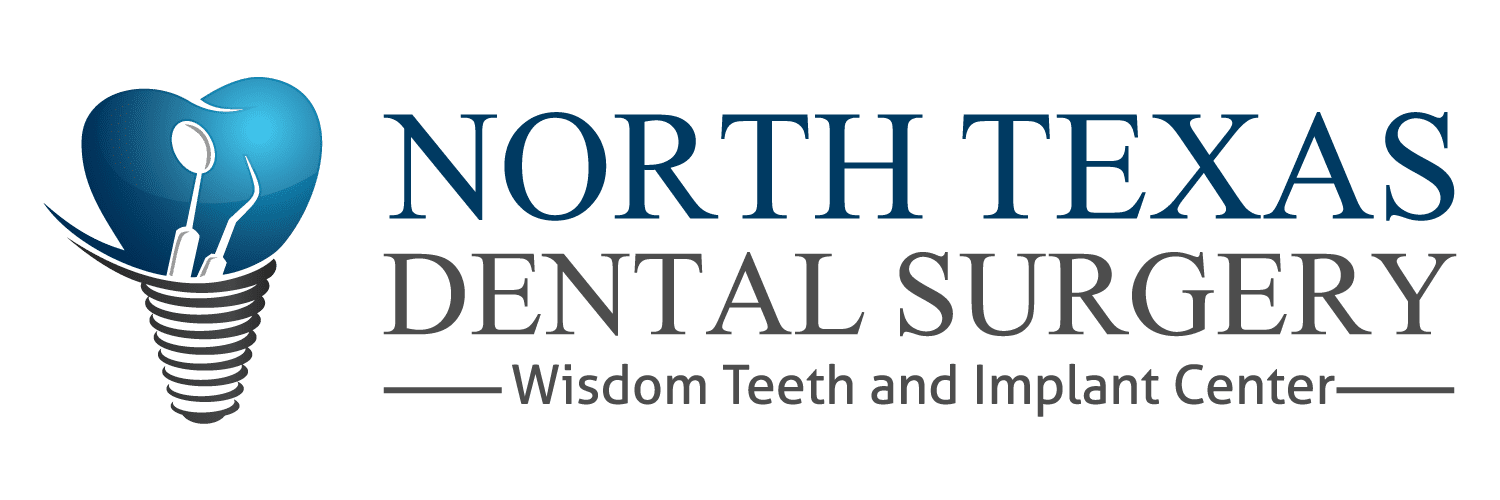Bone Graft for Dental Implant
Have you been told you need bone grafting in order to get your dental implant? When a dental implant is desired, a sufficient amount of bone and gums are needed. This is necessary to ensure the stability of the implant as well as an esthetic outcome. If there is significant bone loss or a bone defect, bone grafting surgery might be necessary. Such examples may include trauma, years of not having a tooth present, a longstanding dental infection, or an extensive extraction. The type of procedure that reverses significant amounts of bone loss or bone defects, is called ridge augmentation or guided bone regeneration or GBR for short. This surgery is required to build the new bone to allow a stable foundation for the success of the dental implant.
Before
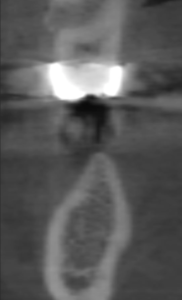
After
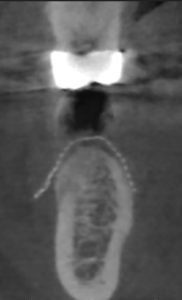
Detecting if a patient needs a GBR surgery is done by taking a 3D CT scan as seen above. This scan will allow the surgeon to see the bone in a 3-dimensional format. Without this type of scan, it is nearly impossible to properly diagnose and formulate a safe approach to the surgery. At least 2 millimeters of bone on every surface is necessary to be able to place a successful dental implant. Lack of available bone is the biggest factor for peri-implantitis or future implant loss. Being properly diagnosed is essential for the long-term viability of the dental implant. For example, if a GBR surgery is performed on the lower jaw near the mental nerve, paresthesia may occur. This factor can be discovered by the 3D scan, which shows the location of all nerve endings in the jaw. The 3D scan can also help the surgeon to formulate a plan to avoid these complications.
Types of Dental Bone Grafting
Let’s first review why guided bone regeneration would be needed in the first place. There are three types of dental bone grafting for implants that may be needed. The first is socket preservation. Socket preservation is a bone grafting procedure that is performed immediately after the tooth is extracted. Once the tooth is extracted, the socket where the tooth once was is filled with bone grafting material. After the bone is added, a barrier membrane is placed on top of the bone to ensure a secure seal. A patient must heal for at least 4-6 months before the implant can be placed. Socket preservation is the most predictable bone preservation technique. The second type of bone grafting procedure is bone grafting done at the time of implant placement. This is necessary only if the tooth has already been extracted previously and a small amount of bone may be needed to ensure the security of the dental implant. Bone is added to the outer edge of the implant at the time of implant placement and a barrier membrane is placed on top of the bone for security. The final type of bone grafting procedure is called GBR. Guided bone regeneration is needed when there is extensive bone loss or deformity.
Guided Bone Regeneration Surgery
Guided bone generation surgery can be performed under local anesthesia or IV sedation depending on the patient’s comfort level. A slight incision will be made along the gumline to access the treatment area. An ample amount of bone will be placed inside the area. Anti-inflammatory and antimicrobial additives may be chosen by your surgeon in specific cases. Stimulants may be added to the bone to create the ideal environment to increase bone growth. The stimulant is a bone morphogenetic protein (BMP). Common brands of BMP is included Infuse and Amino-Spark. This is a liquid growth factor that aids in bone growth, tissue repair, and healing. Next, either a non-resorbable or resorbable barrier membrane will be added to the site. The surgeon will decide which option is best for the success of the surgery. Once the barrier membrane is placed, the site will be sutured and the surgery is now complete. If extensive bone growth is not necessary this can be performed at the time of implant placement. The goal of this surgery is to reverse the bone absorption present and create a new solid foundation for the dental implant. Healing will take around 4-6 months. If this surgery is necessary before the dental implant can be placed, then the implant will not be placed for at least 6 months after the surgery.
Dental Bone Graft Recovery
Take your antibiotics as prescribed, this is vital to prevent any post-operative infections from occurring. Pain medication can be taken as needed.
Removable Appliances:
If you have any sort of removable denture or partial it can not be worn if the device will compress on the bone grafted area. Due to the vertical height and width of the site being changed, adjustments may be necessary for your removable prosthesis to fit properly. In certain cases, you may need to go without the prosthesis for weeks after treatment. Remove the appliance at night and do not sleep in it. Limit the use of the device.
Hygiene:
Lightly swish with warm salt water twice a day to promote healing. Use 1 teaspoon of salt in one cup of warm water. You may experience some tooth sensitivity but it should subside in a couple of weeks. Minor bleeding may occur up to 72 hours after the procedure. If the bleeding becomes excessive, please notify the doctor immediately. You may need to be careful about compressing on the area to stop bleeding because any compression can disturb the bone grafted area. Avoid strenuous activity for the next 2-3 days.
Swelling :
Swelling of the treatment area is normal, as well as slight bruising. An ice pack or frozen vegetables, wrapped in a towel, may be applied to the area to help minimize swelling. Keep your head elevated at all times. Major swelling should be reported to the doctor. The sutures on the surgical site WILL NOT DISSOLVE. They will be removed at the time of the check-up appointment. They may become loose due to swelling going down, this is normal. Do not pick at sutures.
Diet:
Please follow a liquid than a soft diet for 7-10 days following surgery. Chew on the opposite side of the surgical site and DO NOT bite directly on the site. NO STRAWS! Avoid sticky, hard, crunchy, acidic, and spicy foods. Foods such as soup, pasta, eggs, yogurt, mashed potatoes are best. Drink lots of clear fluids. Avoid carbonated drinks, alcohol, and smoking until after your check-up appointment. No lifting the lips/cheeks to view the site, doing so could delay or compromise healing.
Guided Bone Regeneration Material
When performing a GBR surgery the necessary materials are required to ensure a successful surgery. The two most important decisions your surgeon has to make are the type of membrane to use and the type of bone.
There are two common types of protective membranes that are used during surgery, a resorbable membrane and a non-resorbable membrane. These membranes are important for preventing the gums from growing into the area, protecting the bone inside, and allowing for optimal growth. Resorbable membranes are more commonly used during socket preservation or minor bone grafting at the time of implant placement due to the fact that resorbable membranes are better suited for low amounts of bone and quicker healing. Teflon membrane and titanium metal mesh membranes are the two common types of non-resorbable membranes. These types of membranes are better at protecting the area against pressure and aiding stability with a large amount of bone.
The type of bone used for a guided bone regeneration surgery is important to ensure maximum regeneration. Due to advanced technology, transplant surgeries are a thing of the past and not necessary anymore. For example, in the past two highly invasive options were available. An Iliac crest surgery that grafted the bone from your hip to place in the treatment area. This type of graft is highly invasive and debilitating. The second previous option was the Ramal graft surgery. Bone was harvested from the ramus of the jawbone and placed in the treatment area. Once again this option is also highly invasive and traumatic. Now, there are two options for bone grafting a GBR site. The first option is an allograft bone. This type of graft is sterile human donor bone and is the most common type of bone replacement used. The second type of bone is bovine bone. This type of bone is a cow bone that is much better suited for esthetic sites such as anterior teeth. Your surgeon will strategically decide if allograft or bovine bone is better for your grafting outcome.
Signs of Dental Bone Graft Failure
Surgical complications for a guided bone regeneration surgery can be high if your surgeon is not well versed in the procedure as GBR is a highly technique-sensitive procedure. Also, a lack of attention to detail in following your post-op instructions can also dramatically increase the risk of GBR failure. The most common surgical complication is membrane exposure. For example, if a patient decides to smoke after surgery, exposure to the membrane is possible. As seen in the pictures below, the titanium metal mesh exposure increases the risk for infection. Although titanium metal mesh is more resistant than Teflon to dental infections, the toxins from smoking can still seep into the bone grafting site. If this occurs, the surgical removal of the barrier membrane and bone may be necessary to eliminate the infection. Following all your post-operative instructions is key to avoid complications.
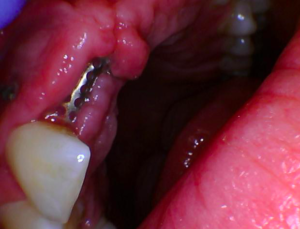
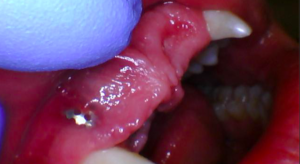
Membrane exposure can also occur due to surgical error. For example, if the tissue flap has too much tension, it can cause the site to become exposed. The surgeon must also take into consideration post-operative swelling, which will increase the tension of the site after surgery. Ensuring the right amount of slack to the gums is imperative to the success of the treatment. Preoperative medication can be given to limit post-operative swelling. This medication is a steroid called Medrol Dose Pak. With the membrane being exposed, this complication can lead to an infection at the surgical site. If not controlled or caught in time, the membrane and bone may need to be removed. If the treatment has to be aborted, healing will be at least 3 months before the surgery can be reattempted.
Dental Bone Graft Cost
The cost of a guided bone regeneration surgery can vary. For example, if a patient has dental insurance or a lack thereof, the price can fluctuate. Price fluctuation depends on many factors such as the type of bone material used, the membrane used, size of the treatment area, and any BMP materials used. If the patient decides to use IV sedation for surgery this can increase the overall price as well. The type of specialist performing the surgery can increase the price due to experience and the predictability the surgeon can give. When choosing the surgeon to perform your treatment, it is important to not only focus on price but who can correctly do the job. As mentioned before, this procedure is highly technique sensitive.
Bone Graft Specialist in McKinney Plano and Grapevine Texas
Tooth #13
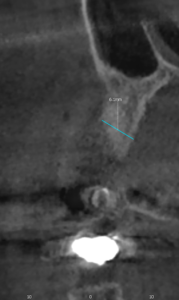
Tooth #9
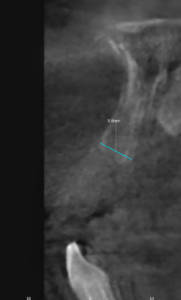
Due to the technique sensitivity of a GBR, it is important to make sure your surgeon has the right technology, tools, and experience. As seen in the patient shown above, two teeth were extracted and a socket preservation bone graft was performed on each area. This surgery was not successful for two possible reasons. First, either the teeth were not extracted properly and caused traumatic bone loss. Or secondly, the patient was misdiagnosed and needed a GBR originally not socket preservation. Unfortunately, the patient above was treated by a general dentist who did not have a 3D scanner to see the extent of infection and performed regular socket preservation instead of a necessary GBR. Due to either technique error or judgment error, the patient is going to need a GBR performed to increase the amount of bone needed in the implant areas. If the surgery was performed correctly the first time, the patient would have saved not only time but money.
If you have questions about your bone grafting needs look no further than our surgical specialist here at North Texas Dental Surgery. Our Board-Certified Specialist has over 10 years of experience with bone grafting procedures. We have locations in McKinney, Plano, and Grapevine why not get your surgical procedure performed correctly the first time. We offer IV sedation, state-of-the-art facilities, and the most innovative 3D scan technology. Come experience a change in the way you view dentistry today!
